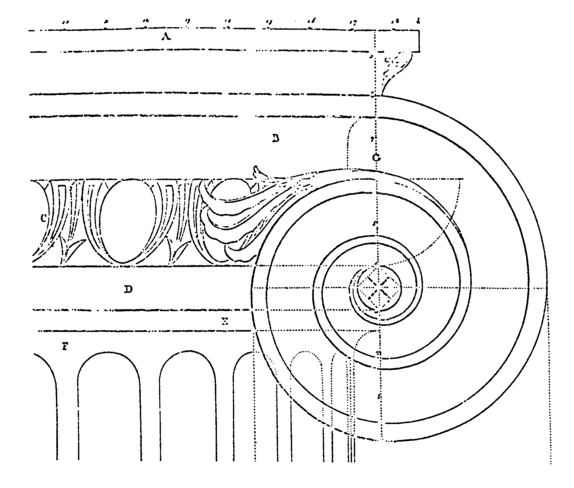

|
Fig. 5a. Palladio's construction of the volute, after Inigo
Jones. Figures 5b and 5c
are enlarged details of the eye.  The description states that the numbers dsignate the different points for "the fix'd foot of the Compass..." It seems to me, however, that the picture fits better with a drawing procedure in which the "compasses" consisted quite simply of a piece of string. The centre points I then take as being holes in a round plate. In each hole is a removable pin. The inner ones become gradually longer than the outer. The drawing process starts by fastening the plate to the flat hewn block of marble. The string has a loop at each end. One loop is fastened around ped no. 1 and the other around a pencil. The taut string is then allowed to wind itself up around pegs 2 to 13, as the volute is drawn. The inner line is then drawin in a corresponding manner, starting with the eye in point 14. The dotted lines in Palladio's detail of the "eye" could thus, I believe, indicate the string. Experimenting further with this idea, one finds that the inner whorls should in fact meet as I have drawn in Figure 5c. In this case, the length of the string would be given and the geometric logic better served. However, drawing volutes with the help of a string and one or more centre pegs might very well be a game that predated geometry. |